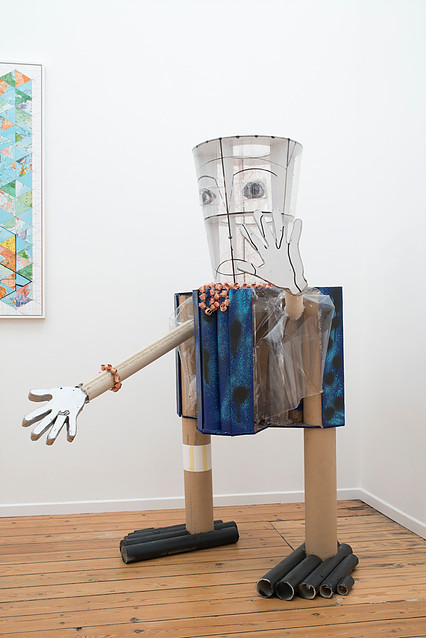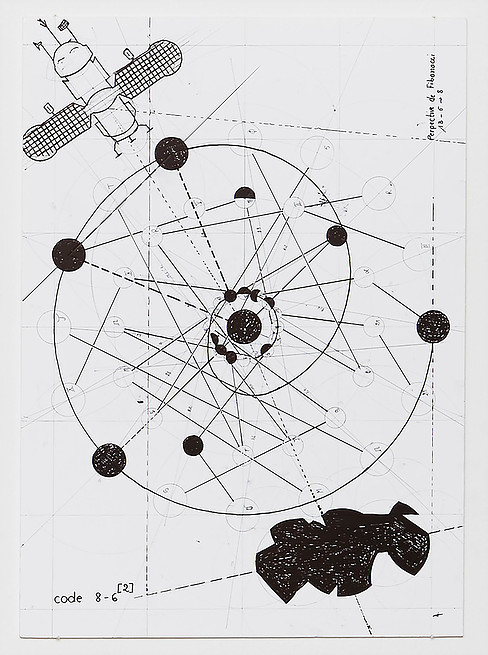
Jean Mukendi Katambayi
Commerceangulaire, 2016
Manda, 2016.
About:
Jean Mukendi Katambayi’s spent his childhood on a mining site in the Democratic Republic of the Congo, his youth defined by the screeching sounds of sirens and the humdrum routine imposed by the colonial establishment which monopolized the steel industry. Katambayi’s parents, a technician and administrative officer, worked amidst a slag-like mountain and a distorted steel chimney.

Kyllux, 2012.

Afrolampe, 2016.

Manda, 2016.
Absorbed in a society that was not able to dedicate considerable energy to arts and culture, this distinguished absence of the gravitas of art, prompted Katambayi to question his immediate community, its future and discourse with the rest of the world. The artist responded by engaging with the medium of cardboard and accompanied by his technical reflexes handed down from his father, Katambayi created imaginary machines. Specialist techniques of art and craft, combined with a deeper reading of mathematics, particular geometry, have informed his artworks.

Calcul, 2016.
Katambayi has participated in several residencies and a few international exhibitions. His most distinguished residency was in 2010 at l’Ecole Supérieure d’Art d’Aix en Provence in 2010, where he concentrated his efforts on establishing a connection between colour and the sense of touch. His work ‘Escon’ scrutinizes the dilemma between intention and destiny and serves to function as a means of participating in a contemporary litany which examines the environmental regard of Africa.
He is interested in what motivates the transformation of societies, particularly those that are called to produce energy. Katambayi is participating in two current exhibitions at Thyssen-Bornemisza Art Contemporary in Vienna and Palais de Tokyo in Paris, both address issues surrounding the earth and environment.( )

Survivor, 2016.

DNA, 2017.
Aside from being an artist, Jean Katambayi Mukendi (b. 1974 in Lubumbashi; lives and works in Lubumbashi) is also impassioned by technology, mechanics, geometry and electricity. In his work he combines influences from daily life with experience gained from his training as electrician. He creates fragile and complex installations driven by sophisticated electrical mechanisms. His technological discoveries are part of a search for solutions to social problems in current Congolese society.(text Wiels)
